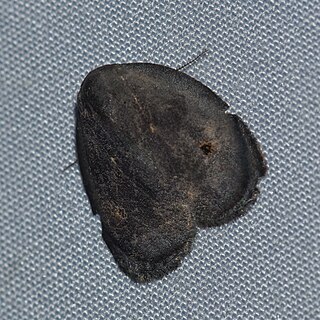
Asura is a genus of moths in the subfamily Arctiinae, and subtribe Nudariina erected by Francis Walker in 1854.

Cisthene is a genus of lichen moths in the family Erebidae. The genus was erected by Francis Walker in 1854.
Cyme is a genus of moths in the family Erebidae. The genus was described by Felder in 1861.
Epimolis is a genus of moths in the family Erebidae. The genus was erected by Harrison Gray Dyar Jr. in 1913.
Episcepsis is a genus of tiger moths in the family Erebidae. The genus was erected by Arthur Gardiner Butler in 1877.

Hemonia is a genus of moths in the family Erebidae first described by Francis Walker in 1863. They are found only in Sri Lanka and Borneo.
Nodozana is a genus of moths in the subfamily Arctiinae erected by Herbert Druce in 1899.
Paracles is a genus of moths in the subfamily Arctiinae. The genus was described by Francis Walker in 1855. The species range from Panama to Patagonia, with quite a few in the southern temperate region of South America.
Zygaenosia is a genus of moths in the family Erebidae. The genus was erected by George Hampson in 1900.

Schistophleps is a genus of moths in the family Erebidae first described by George Hampson in 1891.

Virbia is a genus of tiger moths in the family Erebidae. The genus was erected by Francis Walker in 1854.

Dasychira is a genus of tussock moths in the family Erebidae described by Jacob Hübner in 1809. They are well distributed all over Africa, Europe, North America, Madagascar, Japan, China, India, Sri Lanka, Myanmar, Java and Australia.
Hemonia monochroa is a moth of the family Erebidae. It was described by George Hampson in 1914. It is found on New Guinea.
Hemonia murina is a moth of the family Erebidae. It was described by Walter Rothschild in 1913. It is found on New Guinea.

Hemonia orbiferana is a moth of the family Erebidae. It was described by Francis Walker in 1863. It is found in Sri Lanka, India, Myanmar, Singapore, as well as on Borneo and Peninsular Malaysia.
Hemonia pallida is a moth of the family Erebidae. It was described by George Hampson in 1914. It is found in Australia.

Hemonia rotundata is a species of moth in the family Erebidae. It was described by Snellen in 1879. It is found on Java, Bali, Borneo, Peninsular Malaysia, the Philippines and Sulawesi. The habitat consists of primary and secondary forests.
Hemonia schistacea is a moth of the family Erebidae. It was described by Walter Rothschild in 1913. It is found in Papua New Guinea.
Hemonia simillima is a moth of the family Erebidae. It was described by Walter Rothschild in 1913. It is found in Australia.







